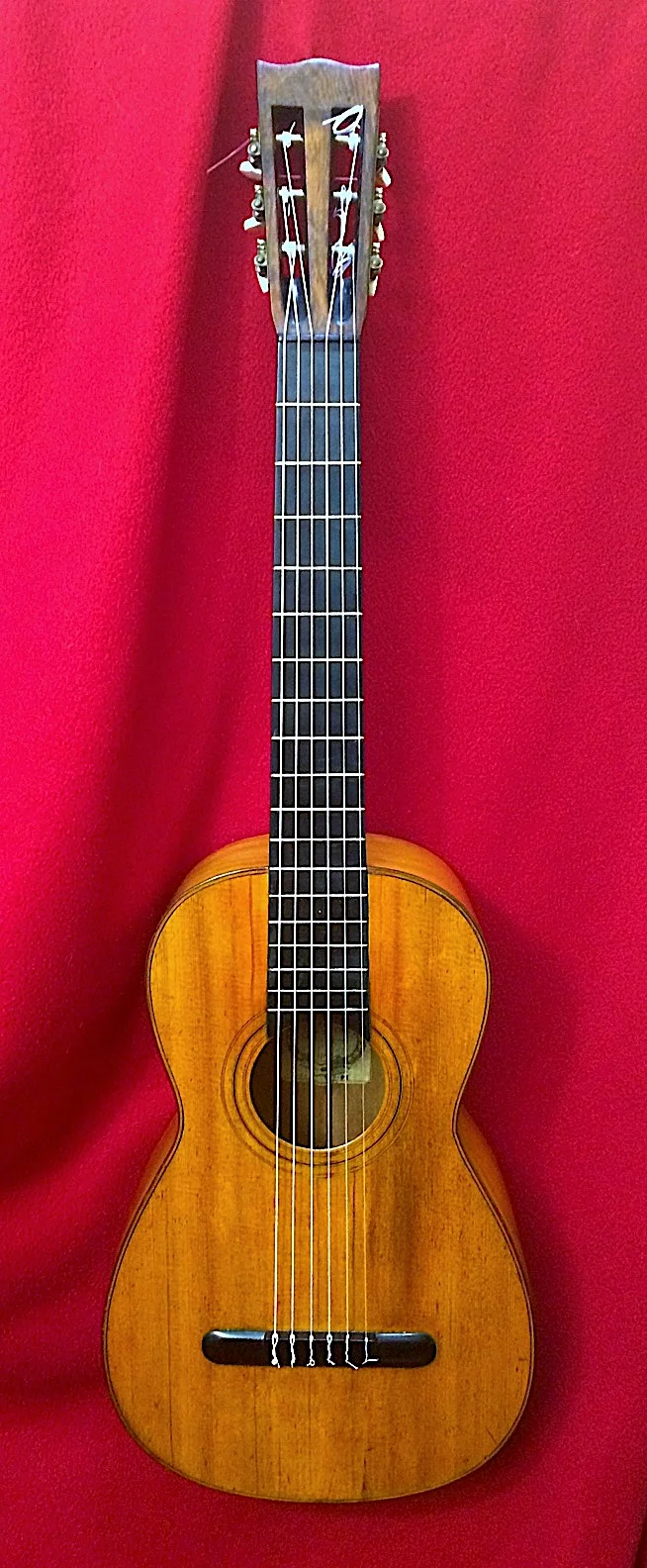1843 Mateo Benedid -Classical Spanish Guitar
1843 Mateo Benedid -Classical Spanish Guitar
Make: Mateo Benedid Diaz
Model: Spanish Guitar
Model Year: 1843
Top: German Spruce
Back & Sides: Birch
Scale: 610mm
Nut: 48.5mm
Finish: French Polish
Tuners: Baker machine tuners
Country: Spain
Condition: Used - very good
Location: USA
Mateo Benedid (1800–1878), a celebrated luthier from Cádiz, was one of two sons of Josef Benedid Díaz (1760–1836). His brother, Joaquín Benedid Díaz (1814–1854), also followed the family tradition of guitar making, earning the Benedid name recognition as master craftsmen. Fernando Sor, in his renowned Méthode pour la Guitare, praised several guitar makers, including Alonso of Madrid, Pagés and Benediz (Benedid) of Cádiz, Joseph and Manuel Martínez of Málaga, as well as Rada, the pupil and successor of Martínez, and M. Lacôte of Paris.
In 1843, when this guitar was crafted, Mateo Benedid lived at 132 Calle Herrón with his wife, María de los Dolores Sosa, and their five children—four daughters and one son. Two years earlier, the family had endured the tragic loss of a two-year-old daughter, but they had recently welcomed a newborn. The household also included five members of María’s extended family, painting a vivid picture of a devoted craftsman working to support his large family amid challenging circumstances. Despite his efforts, Mateo Benedid faced ongoing struggles and passed away in 1878 at the Casa de Misericordia in Cádiz.
This guitar, made by Mateo Benedid in 1843, holds a remarkable history. It originally belonged to Captain John Bautista Rogers Cooper (1791–1872), a mariner from Massachusetts who arrived in Monterey, the capital of Mexican Alta California, in 1823 as the master of the ship Rover. In 1827, Cooper married Gerónima de Encarnación Vallejo (1809–1902), sister of General Mariano Guadalupe Vallejo (1808–1890), the military governor of Alta California.
After transitioning to trading and ranching in 1826, Cooper returned to the sea, commanding the Mexican government’s ship California between 1838 and 1844. During these voyages, he transported mail, prisoners, and officials along the coast between Monterey and Acapulco. In 1846, Cooper sailed to Peru, and in 1849, he traveled to China as the master of the Eveline. It is highly likely that Cooper acquired this guitar during one of his voyages between Monterey and Acapulco, sometime between 1843 and 1846.
Upon Captain Cooper’s death, the guitar was inherited by his daughter, Amelia Cooper (1844–1918). It was later passed down to her daughter, Frances Mary Molera (1879–1968), who eventually gifted it to the guitar's previous owner, T.N. (born 1938). Frances Mary Molera, the first cousin of T.N.’s grandmother, shared the instrument’s rich history with T.N., who remembered her “Aunt Frances” fondly and the stories she recounted.
Understanding the importance of preserving the guitar’s 175-year legacy in California—where it was cherished by prominent pioneering families in Monterey—T.N. documented its lineage. She provided detailed accounts of its history, along with annotated pages from a book, to trace how this exceptional instrument passed through General Vallejo’s family before reaching her. Today, this guitar stands as a testament to Mateo Benedid’s artistry and its remarkable journey through generations of California’s history.










